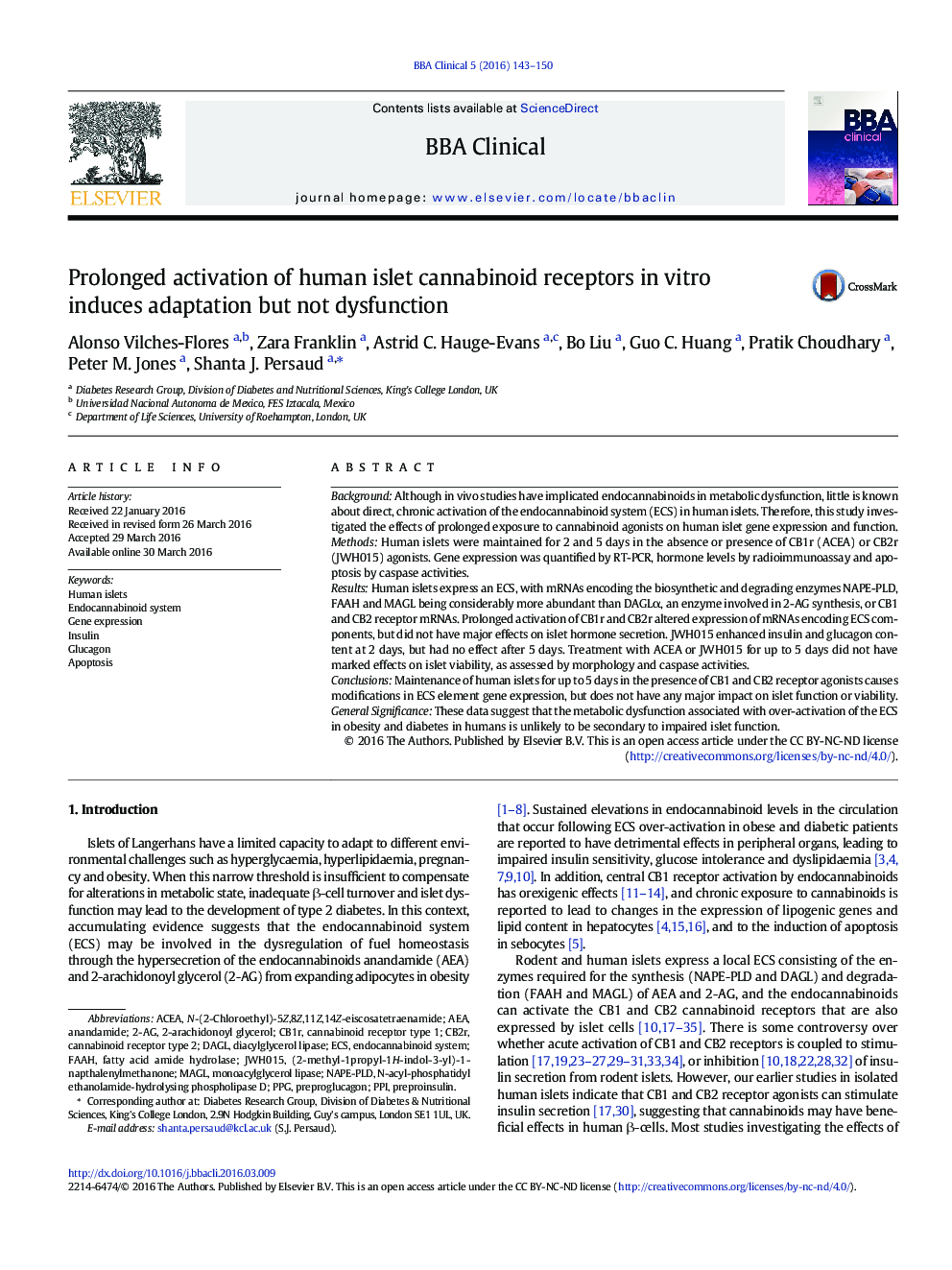| Article ID | Journal | Published Year | Pages | File Type |
|---|---|---|---|---|
| 2773099 | BBA Clinical | 2016 | 8 Pages |
•Human islets express an endogenous cannabinoid system (ECS).•Prolonged activation of human islet CB1 and CB2 receptors modifies expression of ECS elements.•This is not accompanied by marked changes in insulin and glucagon levels or islet viability.•Metabolic dysfunction following ECS activation is not due to impaired islet function or viability.
BackgroundAlthough in vivo studies have implicated endocannabinoids in metabolic dysfunction, little is known about direct, chronic activation of the endocannabinoid system (ECS) in human islets. Therefore, this study investigated the effects of prolonged exposure to cannabinoid agonists on human islet gene expression and function.MethodsHuman islets were maintained for 2 and 5 days in the absence or presence of CB1r (ACEA) or CB2r (JWH015) agonists. Gene expression was quantified by RT-PCR, hormone levels by radioimmunoassay and apoptosis by caspase activities.ResultsHuman islets express an ECS, with mRNAs encoding the biosynthetic and degrading enzymes NAPE-PLD, FAAH and MAGL being considerably more abundant than DAGLα, an enzyme involved in 2-AG synthesis, or CB1 and CB2 receptor mRNAs. Prolonged activation of CB1r and CB2r altered expression of mRNAs encoding ECS components, but did not have major effects on islet hormone secretion. JWH015 enhanced insulin and glucagon content at 2 days, but had no effect after 5 days. Treatment with ACEA or JWH015 for up to 5 days did not have marked effects on islet viability, as assessed by morphology and caspase activities.ConclusionsMaintenance of human islets for up to 5 days in the presence of CB1 and CB2 receptor agonists causes modifications in ECS element gene expression, but does not have any major impact on islet function or viability.General SignificanceThese data suggest that the metabolic dysfunction associated with over-activation of the ECS in obesity and diabetes in humans is unlikely to be secondary to impaired islet function.
